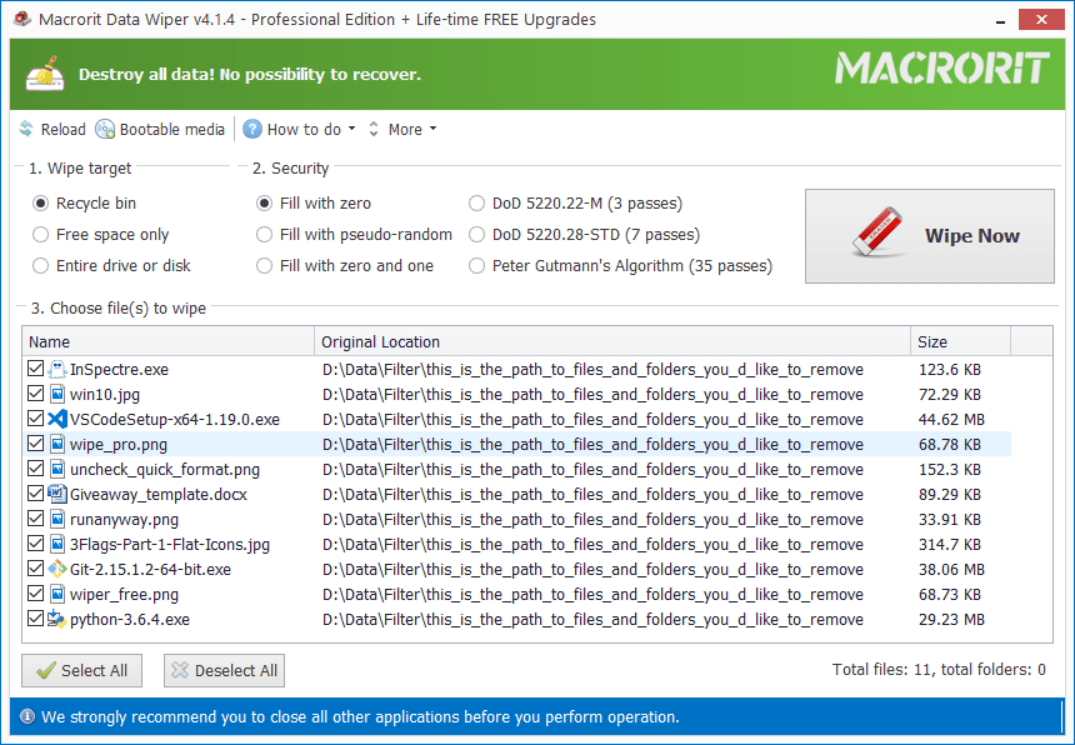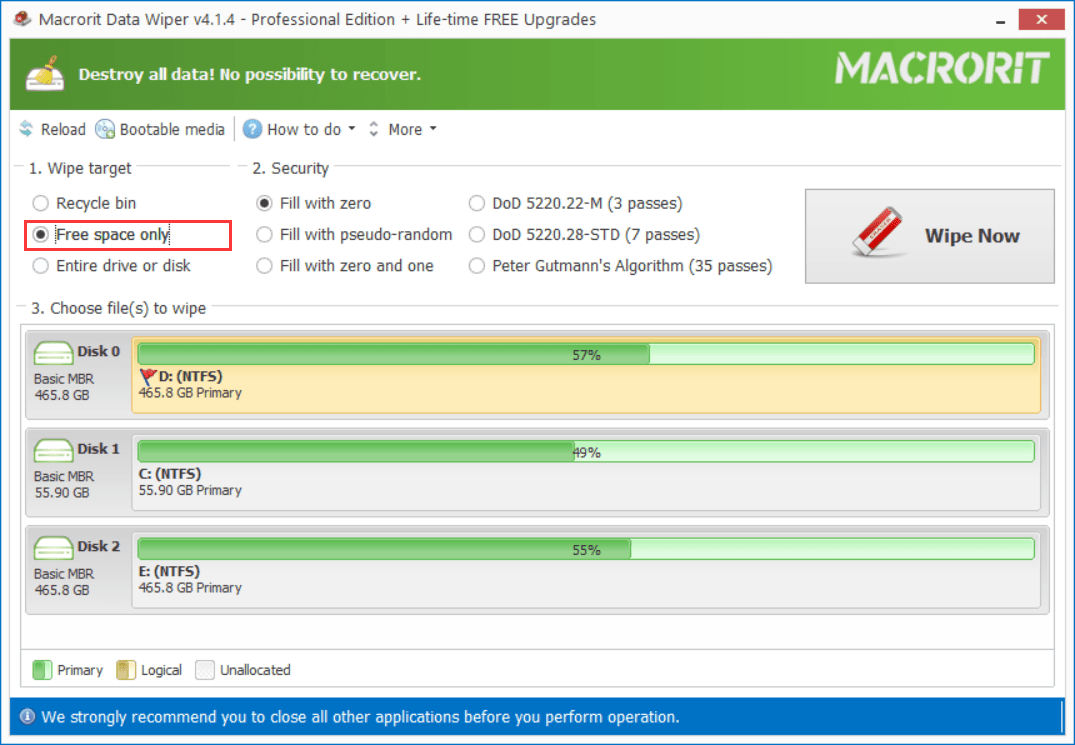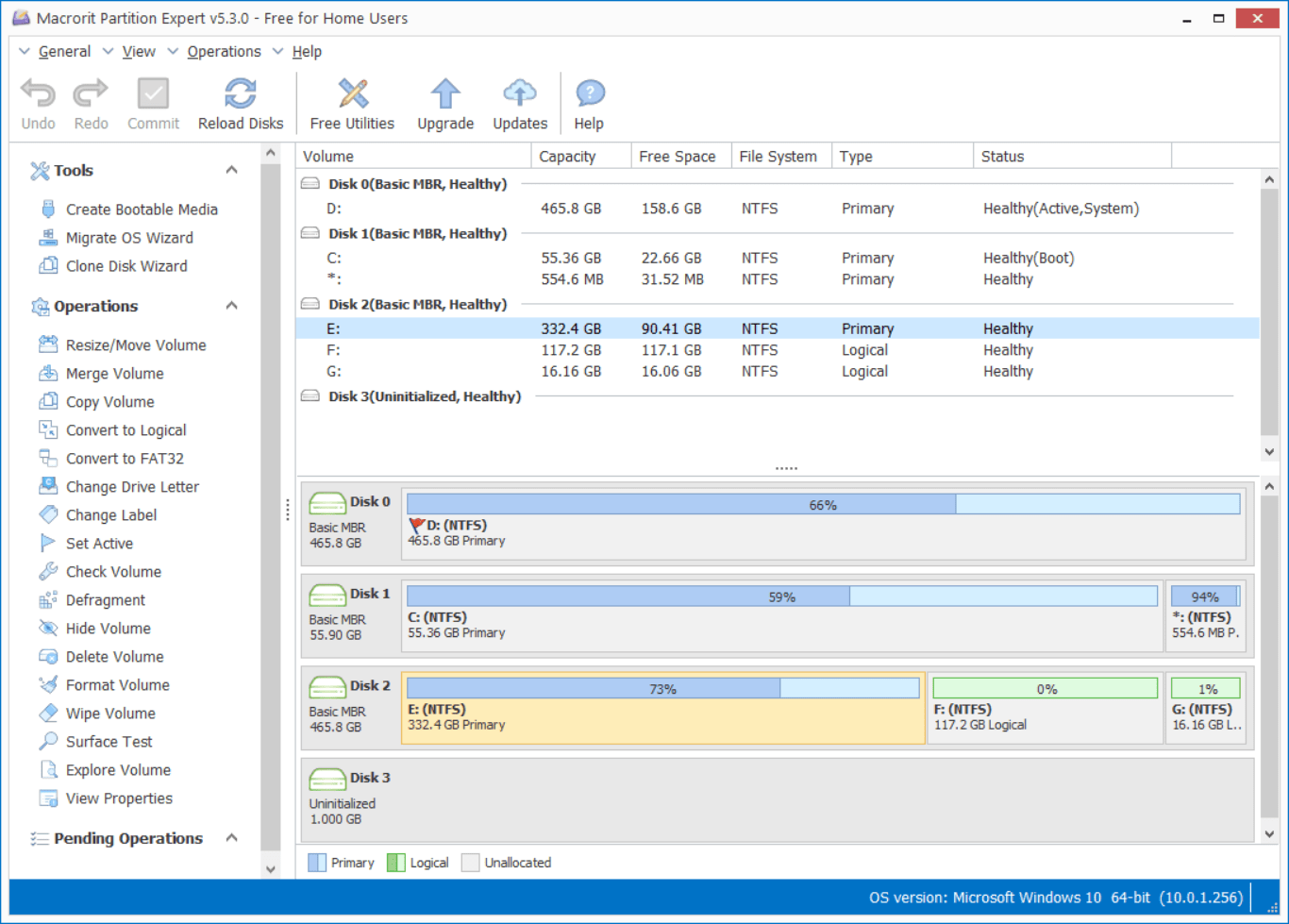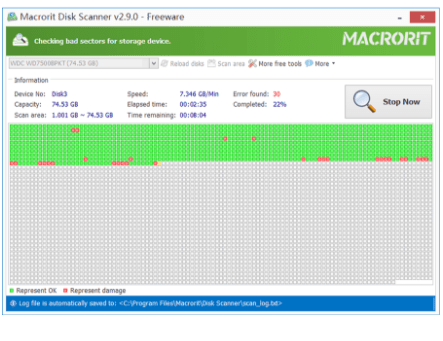Overwrite Deleted files in Data Wiper
Deleted files are moved to either recycle bin or ‘permanently’ deleted by Windows (removed from File Explorer and recycle bin, but, you know, the detail of the file is still there, which is recoverable)
Then, how do we guarantee the deleted file is truly erased and sensitive files are really gone forever?
Instead of deleting them, we can wipe them clean, to wipe is to overwrite. overwrite each sector (sectors store data) with binary character 1 and/or 0, you can choose which method to apply in Data Wiper. Let’s move on to erasing data.
Wipe Recycle Bin
When we press the delete button, the target is deleted to recycle bin, which can be recovered later if you deleted it by mistake, but how to really delete the file? to empty the recycle bin? No, data recovery programs can easily pick up deleted files even after you have emptied the recycle bin.

Now Let’s wipe the recycle bin in Data Wiper:
- Click the link above to download Data Wiper and you can run the portable package if you don’t like to install the program, it’s the portable
- In the first section of the main window click the Recycle bin as the target
- Then choose a wiping plan from section 2 (this is to choose an overwriting method)
- As the default, all files in the recycle bin are checked in section 3, but you can uncheck some to keep them in recycle bin
- Click the WIPE NOW button and confirm
Now, files in recycle bin are wiped clean, next time we can directly wipe them instead of using the “empty recycle bin” function, of course, you can still use this option when you just want to free up space on the disk
Wipe free space
Another situation is that when we delete the file, we use the shortcut combination of Shift+Delete to delete the file, which won’t throw the file the recycle bin but directly deleted. In this case, we can’t wipe the recycle bin, because it’s empty, the wipe recycle bin function will show an empty recycle bin too, what else can we do to make sure the deleted file cannot be recovered.

Well, we can wipe free space, free space which has residue of the deleted file, let’s overwrite the left context of the deleted file with a meaningless number in Data Wiper, steps can be performed like this:
- Run Data Wiper and click Yes to the UAC dialog box (in Windows 10, this dialog box will pop up every time you run an app, not only on Data Wiper but all other programs if you’re not logging in as the administrator)
- In Data Wiper’s main window click the Free space only option in section 1, then Data Wiper will list the disk map the computer
- In the Security section choose a wiping plan from the 6 different plans, DoD wiping schemes are also included, choose one of these options to continue if there are data cleaning regulations in your company
- Then click the partition you already deleted files or (emptied recycle bin) to activate the Wipe Now button in section 3 (the disk map area)
- Close other running programs and opened files (optional), then click the giant WIPE NOW button, confirm and Data Wiper will start to wipe free space on the target partition
The last step is optional, you can still continue to work on the partition, the process of wiping free space won’t affect your current work nor data you saved, but overwriting is the step of writing new data to the hard drive, although it’s meaningless data, the wiping progress will is slower than reading, and it takes time to complete, the large the partition is, the longer it takes, so it’s best to perform the wiping step while you’re using the computer
Alternatively, you can wipe the entire disk or a single partition, but that will take longer time, the fastest and the most secure way of permanently wiping deleted files is to use the Wipe Recycle Bin function
Cipher to wipe free space
Cipher.exe is the default free space wiping tool in Windows, it overwrites sectors by 3 times, since Windows Server 2003, take the official explanation Cipher.exe has the ability to overwrite data that you have deleted so that it cannot be recovered or accessed
How to overwrite deleted data in Windows Server 2003
Microsoft Windows [Version 10.0.17134.165] (c) 2018 Microsoft Corporation. All rights reserved. C:\Users\Macrorit>cipher /w:c: To remove as much data as possible, please close all other applications while running CIPHER /W. Writing 0x00 ............................................................................ Writing 0xFF ............................................................................ Writing Random Numbers ............................................................................
Cipher is easy to use, in Windows 10, you can press the WIN+R buttons and type cmd to open the command prompt, then type cipher /w:c: to wipe free space on C Drive, replace ‘C’ with another drive letter if you have a different volume to deal with
Data Wiper also has a 3-pass overwriting method: DoD 5520.22-M, click to learn more.
Recycle bin vs free space
What’s the difference between recycle wiping and free space wiping, I mean, can I just wipe free space to wipe every deleted file?
Yes, sure you can just wipe free space if all deleted files are on the same partition. Wipe Recycle bin can wipe files from different drives, say, for example, we delete a file in D: Drive, and another in E: Drive, yet another in F: Drive, those 3 files are from different drives but end up in recycle bin, we can run the Wipe recycle bin function in Data Wiper once to wipe deleted data clean, and wiping three files won’t take much time, only seconds will do. But the Wipe free space function will have to run 3 times on the 3 drives, will take much longer time (depends on the size of the drive instead of the size of the file).
If, however, all files are from the same drive, and those files take up almost the entire size of the partition, wipe free space, then, almost perform the same.
So, if we’re about to wipe fewer files from different drives, Wipe recycle bin is better, otherwise, Wipe free space can be considered.

